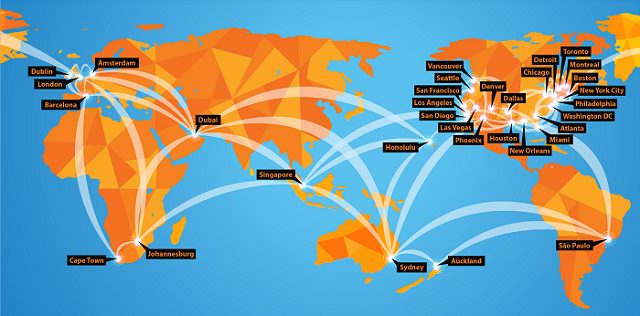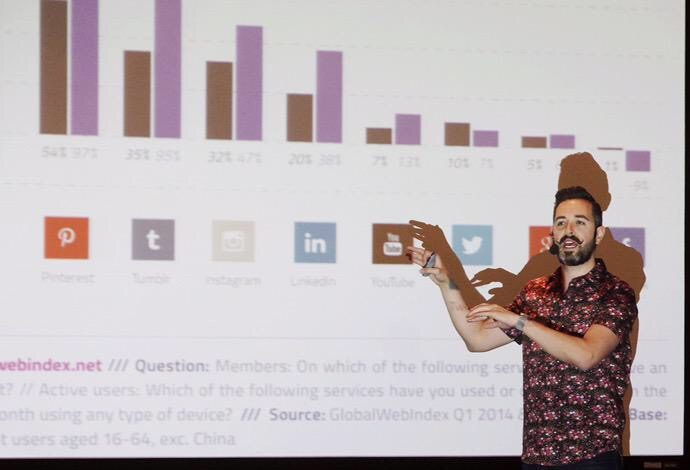Boost Your Business with Account-Based Marketing
In today’s fast-paced business world, companies are always looking for new ways to grow. Account-Based Marketing (ABM) is a strategy that’s gaining popularity. It focuses on targeting key accounts and making marketing efforts personal to meet their needs.
Using an ABM strategy can really help businesses. It improves sales, customer engagement, and revenue. This method allows companies to offer personalized experiences to their most important clients. This builds stronger relationships and leads to long-term success.
Key Takeaways
- ABM is a strategic approach that targets high-value accounts.
- Personalization is key to resonating with the specific needs of target accounts.
- ABM improves sales alignment, customer engagement, and revenue generation.
- B2B personalized marketing drives stronger client relationships.
- Implementing ABM can lead to significant business growth.
Understanding the Power of Account-Based Marketing
Account-Based Marketing (ABM) is changing B2B marketing. It’s a powerful way to grow and make more money. More businesses are using it to improve their marketing and sales.
The Evolution of B2B Marketing Approaches
Old B2B marketing was about getting lots of leads. But now, it’s all about targeting the right people. ABM leads this change, focusing on personalization and key account targeting.
Core Principles of ABM
ABM has a few main ideas. First, it picks the best accounts to target. Then, it makes detailed profiles for each account. Finally, it brings sales and marketing together to reach those accounts.
How ABM Differs from Traditional Marketing Strategies
ABM is different because it focuses on specific accounts. It makes marketing more personal and effective. This way, businesses build stronger relationships and grow over time.
The Business Case for ABM Implementation
Account-Based Marketing (ABM) can change the game for businesses aiming to increase revenue and improve account-based sales opportunities. It focuses on key target accounts and makes marketing more personal. This leads to better sales and marketing teamwork.
ROI Benefits and Financial Impact
ABM is a smart choice because it offers a big return on investment (ROI). It targets high-value accounts and customizes marketing to meet their needs. This approach boosts conversion rates and grows revenue. Research shows ABM can greatly increase ROI over traditional marketing.
Achieving Sales and Marketing Alignment
ABM brings sales and marketing teams closer by setting common goals. This is key for making marketing efforts directly support sales. It leads to better lead nurturing and turning leads into sales.
Resource Optimization and Efficiency
ABM helps businesses use their marketing resources better by focusing on key accounts. This ensures marketing efforts are aimed at accounts most likely to convert. It maximizes the ABM strategy‘s impact.
In summary, the case for ABM is strong. It offers big benefits in ROI, sales and marketing teamwork, and resource use. As B2B marketing gets more complex, an effective ABM strategy is crucial for growth and revenue.
Building an Effective Account-Based Marketing Strategy
To create a winning Account-Based Marketing (ABM) strategy, you need to know your target accounts well. This means starting by picking the most valuable accounts to focus on.
Identifying and Selecting High-Value Target Accounts
The first step is to find and choose high-value target accounts. These are the ones that could bring in a lot of revenue. You use data-driven account selection methods to pick them. This involves looking at firmographic and technographic data, and intent data to see if they’re looking for what you offer.
Data-Driven Account Selection Methods
Choosing accounts based on data means using many sources. You look at firmographic data like company size and location. And technographic data to see what tech they use.
Prioritization Frameworks
After finding potential accounts, you use prioritization frameworks to decide which to go after first. These frameworks look at how much money they could make, if they fit your strategy, and how they buy things.
Creating Detailed Ideal Customer Profiles
Creating detailed ideal customer profiles is key for B2B personalized marketing. You gather info on what your ideal customers are like, what they need, and what problems they face. This helps you tailor your marketing just for them.
Setting Clear and Measurable ABM Objectives
Lastly, setting clear and measurable ABM objectives is vital. It helps drive demand generation and makes sure your ABM strategy matches your business goals. You define KPIs like how many people engage, how many convert, and how much revenue comes from these accounts.
By following these steps, businesses can craft a strong ABM strategy. This strategy boosts personalized engagement and demand generation. It leads to more revenue and growth.
Account Segmentation and Personalization Techniques
In ABM, segmenting target accounts well and making marketing messages fit is key. Good segmentation helps marketers find and focus on the most valuable accounts. This way, they can make their marketing work harder.
Implementing Tiered Account Approaches
A tiered account method sorts target accounts into levels based on their value or importance. This helps marketers use their resources better, focusing on the most important accounts.
- Tier 1: High-value accounts that need personal attention and lots of resources.
- Tier 2: Medium-value accounts that need regular but less intense interaction.
- Tier 3: Low-value accounts that might need automated or minimal efforts.
Industry and Firmographic Segmentation
Segmenting by industry and firmographic data (like company size, location, and revenue) helps create targeted campaigns. These campaigns meet the specific needs and challenges of each group.
For example, a company targeting the healthcare industry can craft messages that address the unique challenges healthcare organizations face.
Personalization at Scale: Balancing Customization with Efficiency
Personalizing at scale is about finding the right mix of customization and efficiency. Marketers use technology and data to offer personalized content and experiences. They do this without losing scalability.
- Use marketing automation tools to personalize emails and website experiences.
- Use dynamic content that changes based on account data and engagement history.
- Keep improving personalization based on feedback and performance data.
By using these strategies, businesses can improve their ABM efforts. This leads to more meaningful engagement and higher conversion rates.
Executing Targeted ABM Campaigns
Running targeted ABM campaigns is key for businesses wanting to make their marketing more personal. They need a strategic plan that includes using different channels, creating content just for those accounts, and precise ads.
Multi-Channel Engagement Strategies
To do ABM well, you must reach out to target accounts in many ways. This means:
- Finding the best online places to connect with them
- Using direct and personal ways to reach out
Digital Touchpoints
Digital spots are vital in ABM. They help businesses reach their audience online. This includes email marketing, social media, and online ads. Using these, marketers can get their brand seen more and connect with important people.
Direct and Personal Outreach
Direct and personal contact is also important. It helps build real connections with target accounts. This can be through personal emails, phone calls, and one-on-one meetings. These personal touches show you really get what they need, making them more likely to choose you.
Content Creation for Target Accounts
Creating content is a big part of ABM. It lets businesses talk directly to their target audience’s needs. By making content just for them, marketers can show they understand their problems, making their brand a trusted advisor.
When making content, remember to:
- Know the account’s industry and problems
- Make content that speaks to their specific needs
- Use different types of content, like whitepapers and webinars
Account-Based Advertising and Retargeting
Advertising and retargeting are key parts of a good ABM plan. By showing ads to specific accounts, businesses can keep their message alive and stay in front of decision-makers.
Good account-based ads need:
- Platforms that let you target exactly who you want
- Ads that are interesting and relevant to the audience
- Retargeting to catch people who’ve seen your brand before
Lead Nurturing in the ABM Context
Lead nurturing in ABM is about making personalized experiences that connect with target accounts. This helps businesses build strong relationships with their most valuable customers. It’s about understanding and meeting their unique needs.
Nurturing Accounts with Precision
Account-focused nurture sequences aim to engage target accounts with custom content and interactions. These sequences include:
- Identifying key decision-makers within the target account
- Creating content that addresses their specific pain points
- Utilizing multi-channel engagement to maintain consistent communication
Stakeholder Mapping and Engagement
Effective stakeholder mapping is key to understanding the complex dynamics within target accounts. By identifying and engaging key stakeholders, businesses can:
- Develop targeted content that resonates with each stakeholder’s interests
- Enhance collaboration between sales and marketing teams
- Improve the overall customer experience through personalized engagement
Converting Interest into Account-Based Sales Opportunities
The ultimate goal of lead nurturing in ABM is to turn interest into real sales opportunities. This involves:
- Monitoring engagement levels to identify ready-to-buy accounts
- Utilizing account intelligence to inform sales strategies
- Aligning sales and marketing efforts to capitalize on emerging opportunities
By using these strategies, businesses can improve their lead nurturing. This leads to more effective account-based sales opportunities. It also helps in growing long-term through B2B personalized marketing.
Essential ABM Technology and Tools
Effective ABM needs various technologies to make marketing easier. This includes data analysis and campaign execution. Businesses must use advanced tools and technologies for a successful ABM strategy.
CRM Integration for Account Management
CRM Integration for Account Management
Customer Relationship Management (CRM) systems are key for ABM. They help manage account data and interactions in one place. Integrating CRM with other ABM tools makes data sharing smooth, improving account insights and marketing efforts.
For example, Salesforce and Microsoft Dynamics are top CRMs that work well with ABM tools for better account management.
Account Intelligence and Intent Data Platforms
Account intelligence and intent data platforms are vital for finding and understanding valuable accounts. They collect data to give insights into account behavior and intent. Tools like 6sense and DemandBase help marketers create targeted ABM campaigns.
Marketing Automation for ABM Execution
Marketing automation platforms are crucial for running ABM campaigns on a large scale. They help create personalized content, automate workflows, and track engagement. By combining marketing automation with CRM and account intelligence, businesses can have a strong ABM strategy.
Popular tools like Marketo and Pardot can be customized for ABM. Using these technologies can improve ABM strategies, account management, and campaign results. The right combination of CRM, account intelligence, and marketing automation is essential for ABM success.
Measuring and Optimizing ABM Success
To measure the success of Account-Based Marketing (ABM), businesses need to use data. They should track key performance indicators (KPIs) to see how ABM affects target accounts.
Key Performance Indicators for Account-Based Programs
Measuring ABM success starts with the right KPIs. These metrics show how ABM efforts impact target accounts and boost revenue.
Engagement Metrics
Engagement metrics are key to seeing how target accounts interact with your content. They include:
- Email open rates
- Content downloads
- Website visits from target accounts
By watching these metrics, marketers can see how interested target accounts are.
Pipeline and Revenue Impact
The true test of ABM is its effect on the sales pipeline and revenue. Marketers should look at:
- The number of qualified leads from target accounts
- The conversion rate of these leads into opportunities
- The revenue from these opportunities
This shows how ABM directly affects the bottom line.
Account Penetration Analysis
Account penetration analysis looks at how deep you’ve reached into target accounts. It checks the number of stakeholders engaged, the range of services or products sold, and revenue growth from these accounts.
Continuous Improvement Frameworks
To keep ABM successful, businesses must always look to improve. They should regularly check performance data, ask sales teams for feedback, and keep up with industry trends. This helps refine ABM strategies over time.
By using these strategies, businesses can make their ABM programs better. This leads to more engagement, revenue, and growth from target accounts.
Conclusion
Businesses are facing tough challenges in B2B marketing. Using an Account-Based Marketing (ABM) strategy is key. It helps focus on important accounts and makes marketing more personal.
This approach leads to better sales, more customer engagement, and higher revenue. It’s all about improving how sales and marketing work together.
To do ABM well, you need to know your audience inside out. Use data and analytics to guide your marketing. This way, you can tailor your strategies to fit your business needs.
By doing this, you can get the most out of your marketing efforts. It helps your business grow over time.
Using B2B personalized marketing with ABM helps build strong relationships with key accounts. As marketing keeps changing, using ABM strategies is vital. It helps businesses stay competitive and succeed in the long run.
FAQ
What is Account-Based Marketing (ABM) and how does it differ from traditional marketing strategies?
Account-Based Marketing (ABM) targets high-value accounts with personalized marketing. It’s different from traditional marketing, which casts a wide net. ABM focuses on specific accounts, leading to better engagement and conversion rates.
How do I identify and select high-value target accounts for my ABM strategy?
To find high-value accounts, use data and frameworks. Look at firmographic data, industry trends, and growth potential. This helps determine which accounts are most likely to grow your revenue.
What role does personalization play in ABM, and how can it be achieved at scale?
Personalization is key in ABM, making marketing efforts resonate with target accounts. To do this at scale, use technology like marketing automation and account intelligence platforms. This balances customization with efficiency.
How can I measure the success of my ABM initiatives?
Track KPIs like engagement, pipeline, and revenue impact to measure ABM success. Use continuous improvement frameworks to refine your strategies over time.
What technologies are essential for implementing a successful ABM strategy?
Key technologies for ABM include CRM integration, account intelligence, and marketing automation. These tools help streamline efforts and boost marketing efficiency.
How does ABM contribute to sales and marketing alignment?
ABM aligns sales and marketing by focusing on the same high-value accounts. This ensures marketing supports sales goals, leading to better collaboration and revenue.
What are some common challenges in implementing an ABM strategy, and how can they be overcome?
Challenges include data quality, sales and marketing alignment, and personalizing content. Overcome these by investing in technology, fostering collaboration, and refining strategies based on data.





































No comments